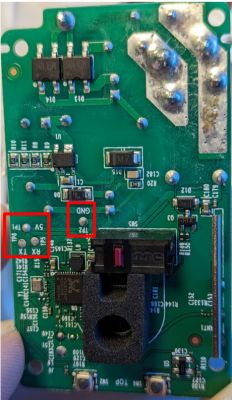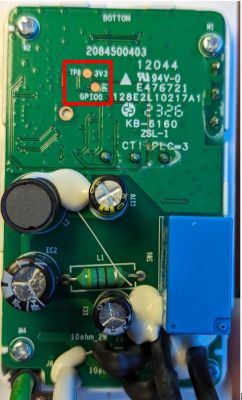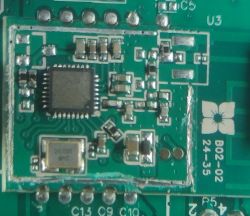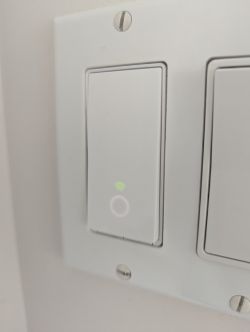Kasa Smart Single Pole Light Switch by TP-Link (HS200)
The case is a bit difficult to crack open, but it's possible by using only a flat head screwdriver and by prying the sides. Here's the PCB on both sides:


I connected the 5V pad on the PCB to the 5V rail of the USB Serial Converter. The rest of the pads are clearly labeled in the pictures. It's like it was meant to be reflashed
Short the GPIO0 pad to the 3V3 pad next to it to enable bootloader mode. Use the "Restart" tact switch to restart the MCU. The "Reset" tact switch is just another input.
The rest is easy! Follow this guide to flash the firmware: https://www.elektroda.com/rtvforum/topic4097185.html
Here's a partial template I've come up with. It allows control of the relay and the main LED by the main switch. The "Reset" switch and the tri-color "wifi" LED are mapped but I'm not sure what to do with them. I'd like to use them for their original intended purpose but I don't know how. I hope that helps
The case is a bit difficult to crack open, but it's possible by using only a flat head screwdriver and by prying the sides. Here's the PCB on both sides:


I connected the 5V pad on the PCB to the 5V rail of the USB Serial Converter. The rest of the pads are clearly labeled in the pictures. It's like it was meant to be reflashed
Short the GPIO0 pad to the 3V3 pad next to it to enable bootloader mode. Use the "Restart" tact switch to restart the MCU. The "Reset" tact switch is just another input.
The rest is easy! Follow this guide to flash the firmware: https://www.elektroda.com/rtvforum/topic4097185.html
Here's a partial template I've come up with. It allows control of the relay and the main LED by the main switch. The "Reset" switch and the tri-color "wifi" LED are mapped but I'm not sure what to do with them. I'd like to use them for their original intended purpose but I don't know how. I hope that helps
Code: JSON







